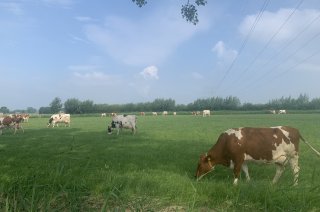
category_news
Soil carbon sequestration in grazing systems does not lead to net-zero
Solely relying on soil carbon sequestration in grasslands to offset the warming effect of greenhouse gas (GHG) emissions from current ruminant systems is not feasible. That is the main conclusion of research of Wageningen University & Research (WUR) published in the scientific journal Nature Communications.
Soil carbon sequestration offers hope to offset the climate impact of ruminant production systems. It has often been promoted as a promising mitigation strategy. ‘The benefit of this strategy is rather limited’, says researcher Yue Wang. ‘We show that the claims about grazing systems having a negative GHG balance could be misleading, and we need to be more realistic on this if we really strive for climate change mitigation’.
Carbon gap
The study demonstrates that there is a huge carbon gap worldwide between what has been stored in the grassland soils and what is required for compensating the emissions from ruminant production. Globally, about 135 gigatonnes of carbon is required to offset the continuous methane and nitrous oxide emissions from ruminant sector, which is nearly twice the current global carbon stock in managed grasslands. The potential for further sequestering carbon in those soils is far from filling the gap, let alone that the losses of soil carbon is happening in many regions.
Reduce cattle density
Farms need to substantially reduce their cattle density when aiming for achieving net-zero by means of soil carbon sequestration in grasslands. For instance, an average lactating cow in the Netherlands emits about 160 kilo of methane per year. To fully offset those emissions, a maximum of 0.3 heads cattle per hectare would be allowed, under a very optimistic assumption that the grasslands could sequestrate an additional 50 tons of carbon per hectare.
This value would be even lower if more emissions sources, such as feed production and manure management, are considered. In practice, however, the current cattle densities in most of the world regions are higher than the calculated celling.
Alternative modelling approach
There are fundamental differences between short-lived methane and long-lived carbon dioxide. On top of this, soil carbon sequestration is most often a time-limited process while GHG emissions generally represent a continues flow. ‘When incorporating soil carbon sequestration in the GHG calculations of ruminant systems, the traditional accounting method such as global warming potentials has its flaws in capturing those differences’, says assistant professor Corina van Middelaar. ‘We, therefore, adopted an alternative modelling approach that allows us to overcome these flaws and to more fairly equate the climate impact of carbon sequestration and GHG emissions.’